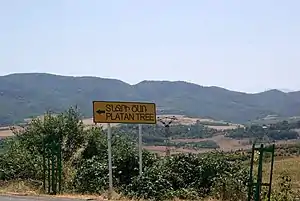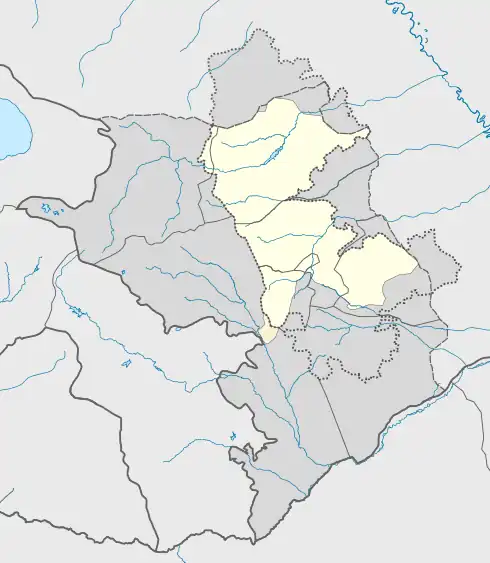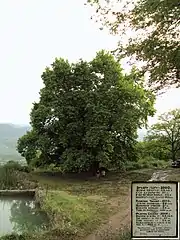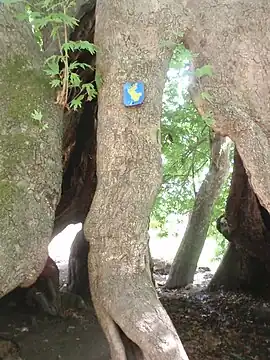Skhtorashen
Skhtorashen (Armenian: Սխտորաշեն, also Şıxtoraşen, Skhtorasher, and Suktorashen) or Shykh Dursun (Azerbaijani: Şıx Dursun) is a village de facto in the Martuni Province of the breakaway Republic of Artsakh, de jure in the Khojavend District of Azerbaijan, in the disputed region of Nagorno-Karabakh.
Skhtorashen / Shykh Dursun
Սխտորաշեն / Şıx Dursun | |
|---|---|
 A sign towards Tnjri, a 2000-year old plane-tree near Skhtorashen | |
 Skhtorashen / Shykh Dursun  Skhtorashen / Shykh Dursun | |
| Coordinates: 39°42′13″N 46°56′26″E | |
| Country (de facto) | |
| • Province | Martuni |
| Country (de jure) | |
| • District | Khojavend |
| Population (2005)[1] | |
| • Total | 19 |
| Time zone | UTC+4 (AMT) |
Near the village is a 2042 years old (as of 2022) giant Oriental plane tree (Platanus orientalis) named Tnjri, with a circumference of 27 m and height of 54 m.
History
During the Soviet period, the village was a part of the Martuni District of the Nagorno-Karabakh Autonomous Oblast.
Historical heritage sites
Historical heritage sites in and around the village include Tnjri, a 2,000-year-old Oriental Plane, the 12th/13th-century village of Mavas (Armenian: Մավաս), the village of Hin Skhtorashen (Armenian: Հին Սխտորաշեն, lit. 'Old Skhtorashen') from between the 15th and 19th centuries, the 17th-century monastic complex of Yerek Mankuk (Armenian: Երեք մանկուք) in Mavas, and the church of Surb Astvatsatsin (Armenian: Սուրբ Աստվածածին, lit. 'Holy Mother of God') built in 1731.[2][3]
Economy and culture
The population is mainly engaged in agriculture and animal husbandry. The village is part of the community of Karmir Shuka.[2]
Demographics
The village has an ethnic Armenian-majority population, and had 19 inhabitants in 2005.[1]
Gallery
- Tnjri, a 2000-year old plane-tree near Skhtorashen

.jpg.webp)

.jpg.webp)

References
- "The Results of the 2005 Census of the Nagorno-Karabakh Republic" (PDF). National Statistic Service of the Republic of Artsakh.
- Hakob Ghahramanyan. "Directory of socio-economic characteristics of NKR administrative-territorial units (2015)".
- Kiesling, Brady; Kojian, Raffi (2019). Rediscovering Armenia: An in-depth inventory of villages and monuments in Armenia and Artsakh (3rd ed.). Armeniapedia Publishing.

